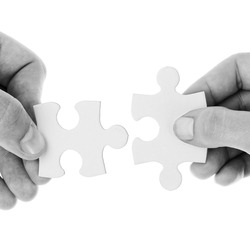The Reality Simulators in Our Heads
 The core of our existence revolves around two questions: “what is” and “what matters”. Whose answers give us two kinds of knowledge: one analytic and systematizing, the other full of emotion, sometimes loving and wise, sometimes full of blame and hate. One gives us more control over reality, the other helps us live in peace and prosperity but can also be weaponized to incite violence and destruction. Both questions have their own method for knowledge: one uses conceptual models and reasoning, the other feelings and narratives. And each has a broad field in academia: the sciences and the humanities. But there is nothing academic about these two questions, every day we navigate the world using both.
The core of our existence revolves around two questions: “what is” and “what matters”. Whose answers give us two kinds of knowledge: one analytic and systematizing, the other full of emotion, sometimes loving and wise, sometimes full of blame and hate. One gives us more control over reality, the other helps us live in peace and prosperity but can also be weaponized to incite violence and destruction. Both questions have their own method for knowledge: one uses conceptual models and reasoning, the other feelings and narratives. And each has a broad field in academia: the sciences and the humanities. But there is nothing academic about these two questions, every day we navigate the world using both.
But I fear the following is true about the human mind, that our feelings, morality and narratives –indeed, our very identities– influence our ideas about how reality works. And we are mostly blind to this when it happens to us. We evaluate what is true based on feelings. But our brains don’t let us feel the truth of ideas in conflict with our narratives, always finding a way to explain things differently so they seem to fit.

Not to Explain but to Model
The only cure, for as far as it works, is to focus on objectively and accurately trying to construct conceptual models that describe reality. Models that don’t just explain, but from which we compute consequences. Models that when put together form a kind of reality simulator. Where we evaluate how accurate the simulator is by going over the various consequences. Verifying that they don’t conflict with other things that we know or can test. And in that process, let others critique our results based on the same commitment to objectivity and accuracy.
A model can describe the physical world, but conceptual models can describe anything, including a model of conceptual models, like this very writing. However, models are not without their difficulties. For starters, all models are somewhat wrong, they leave out details and idealize others. Moreover, many things can be described in more than one way, leading to seemingly conflicting models that might just be capturing different perspectives.
Much of this simulator building our brains do automatically, already starting before we are born. Learning to recognize and predict the inputs of our senses, keeping the simulation in sync with reality as new observations come in. But it is one thing to recognize objects, tendencies, and sequences of causes and effects. It is another to recognize what lies underneath, the systems and the foundational rules of reality. Those we mostly learn from other people, providing us with analogies and intuitions by which we learn more. But we should be wary, history is riddled with ideas that explained what was observed, that provided intuitions, yet that could not be used to predict, that could not be used to build a conceptual simulator from. And indeed, that have all turned out to be wrong.

Being Human
So here we are, all human beings, all with reality simulators in our heads, all only observing a small sliver of reality. Trying to figure out “what is” and “what matters”. Making many mistakes along the way because:
- we don’t separate the two questions enough;
- our brains have blind spots;
- we like explanations, but should focus on computing consequences;
- our brains learn automatically, to go beyond we need to learn how to learn;
- even good models can be critiqued because they are a simplified and singular picture of a complicated world.